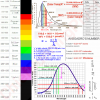It.killed.elvis
Member
foolsin my botany coarse watts mean nothing you can a 1000w incandescent that has a very low photon flux yield and an 50w led with a high photon flux yield so look for a light with around 900 umol/s for a flowering crop that should get you close then add small bulbs for side lighting till she dont like it then back off a little photosynthetic photon flux is PPF in a umol/s rating that tells you how much energy is getting into the plants tissue and doing work watts is just how much you are consuming at the plug not whats hitting your leaf in a useable form. So remember it is PPF .not lumins not PAR not watts/amps or anything else it is photosynthetic photon flux that tells you how much u are giving your leaf so look for highest PPF numbers compared to the watts and that will give you most energy useable by plants with the lost operations cost.






